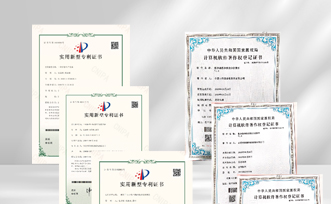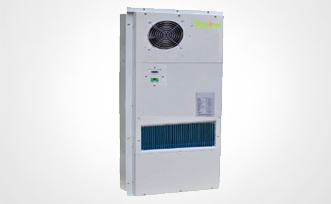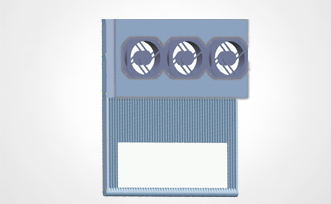Southern Finance All media reporter Lin Dianchi reports from Shen
Today, people shuttle on the road green brand new energy vehicles have long been commonplace, in 2022, the penetration rate of new energy vehicles in the country has reached 25.6%, while nine years ago only 0.03%.
Power batteries account for 40% of the cost of new energy vehicles, and the rapid decline in battery costs has played a crucial role in the entry of new energy vehicles into thousands of households.
"In 2025, it is expected that the global sales of new energy vehicles will reach 16 million, and the development of new energy vehicles has also driven the development of power batteries, and the demand for power batteries is expected to reach 1120GWh in 2025." Ganfeng Lithium technology center general manager Peng Aiping talked about.
Data show that China's current power battery industry is the largest, with a global market share of more than 60%. Competition between manufacturers is becoming more and more "internal volume", how to maintain and develop the leading advantage, leading scale, advanced technology is a very important topic.
On June 16, 2023 (27th) Guangdong-Hong Kong-Macao Greater Bay Area Auto Show and New Energy Vehicle Expo officially opened, in the afternoon of the power battery industry new track exploration forum, the experts discussed the above topics.
At present, there are factors affecting consumers' choice of new energy vehicles such as driving range and safety. Increasing the range means increasing the energy density of the battery at the same volume.
"The battery energy density is improved, the new material system accounts for 40%, and the other 60% contribution is from the manufacturing industry, including the advanced manufacturing technology of Ningde Times and BYD to increase the energy density." Li Baohua, a professor at Tsinghua University's Shenzhen Graduate School of International Studies.
Meng Xiangfeng, assistant chairman of Ningde Times, said that Ningde Times to create digital batteries, all designs are mathematical models can be calculated, quantifiable, not simple material experiments in the past, more innovation results from model calculation and the application of big data.
In his view, batteries are a typical high-end manufacturing industry, and the manufacturing field continues to break through the original limits in the direction of automation, digitalization and intelligence. At present, Ningde Times produces 2.2 million cells per day, and there are 6,800 quality control points on the production line. In addition, through a large number of artificial intelligence and automation technology, greatly reduce the use of personnel, the current eighth generation production line in Ningde's latest factory has been put into production, the factory has greatly reduced the impact of personnel participation and manual error on product quality.
Solid-state batteries are expected to be commercialized in 2026
In the "Energy saving and New energy Vehicle Technology Roadmap", it is proposed that the energy density of the power battery will reach 400Wh/kg in 2025 and 500Wh/kg in 2030. "The limit density of the ternary lithium battery system is 300Wh/kg, which is still far from this goal." Peng Aiping said.
Pang Chunlei, general manager of Betrui silicon oxygen product line, said that the energy density improvement of power batteries is divided into two directions: first, the direction of material design, and the improvement of the gram capacity of the material itself, including positive and negative electrodes. The second is the design of the battery cell, including increasing the size of the battery cell and increasing the content of active substances, such as the design concept of BYD blade battery and the innovative design of PACK structure.
"In terms of safety, material and battery manufacturers are also actively exploring, mainly adding additives to the electrolyte, coating the diaphragm with ceramic and alumina, increasing the mechanical strength and high temperature resistance of the ceramic and diaphragm." It also uses safer cathode materials, such as lithium iron phosphate." Peng Aiping said.
In Peng Aiping's view, to fundamentally solve the safety of batteries and improve energy density, solid-state batteries will be a better development direction.
This is because solid-state batteries contain a small amount of electrolyte, basically using solid materials, even in the case of thermal runaway battery will not occur spontaneous combustion. Solid state batteries can use lithium metal as a negative electrode material to increase the energy density of the battery.
Peng Aiping shared the acupuncture experiment of solid state battery and ternary lithium battery on the PPT, ternary lithium battery can not pass the acupuncture experiment, and spontaneous combustion will occur during the acupuncture process. Solid state battery through the needle, in addition to the pinhole, the battery will not occur other damage, showing very good safety performance.
At present, major research institutions and enterprises around the world have carried out related research in the field of solid-state batteries, such as domestic research institutes of the Chinese Academy of Sciences, Ningde Times, Ganfeng Lithium have related research in solid-state batteries, Ganfeng's first generation of solid-liquid mixed batteries has been industrialized, has been loaded into the vehicle operation.
Peng Aiping said that the all-solid-state battery is relatively difficult to commercialize in the near future, at least after 2026 all-solid-state batteries can be commercially applied. In recent years, solid-liquid hybrid batteries may be applied on a large scale, many companies have achieved mass production and loaded on new energy vehicles, and car companies such as NiO are also testing. With the large-scale promotion of solid-liquid hybrid batteries, the material cost will gradually decrease compared with ternary batteries, and the material cost is lower than that of traditional ternary lithium battery materials.
Battery materials continue to iterate
As Li Baohua said, the progress of battery technology is closely related to materials. Although solid state batteries are the future direction of industrial development, the current battery technology route is still dominated by ternary batteries and lithium iron phosphate batteries, and battery materials mainly include four major components such as positive electrode, negative electrode, diaphragm and electrolyte.
Pang Chunlei said that the high nickelization of ternary anode materials has been very obvious, Betry focus on the development of high nickel ternary, the research and development direction is mainly for high nickel NCM (nickel cobalt manganese) and NCA (nickel cobalt aluminum), by improving the energy density of the battery, high nickel ternary materials can take into account the application needs of long mileage and fast charge direction.
The development of high-nickel materials is mainly to increase the stability through structural design, the main direction is the design of core-shell structure, radial growth structure, heterogeneous structure design, through these directions to improve the stability of the material and improve the battery performance.
In terms of negative electrode, the current mainstream silicon-based negative electrode materials in the market mainly include silicon-carbon composite materials and silicon-oxygen negative electrode materials, and the shipment of silicon-based negative electrode materials has exceeded 3,000 tons in 2022, accounting for the majority of the market share.
Betry silicon carbon materials basically achieve mass production generation, reserve generation and development generation. The fourth generation of Betry products has achieved mass production, the capacity can reach 1800mAh/g, the new generation of silicon oxide products have been mass produced, and the efficiency has reached more than 90% for the first time, basically close to the level of graphite." Pang Chunlei said.
Pang Chunlei added that the development direction of silicon carbon materials is developing towards high capacity, and the latest third-generation material capacity of Betrie is 1800 mAh/g, and the technical path is nano, carbon coating and composite. The disadvantage is that the first efficiency is relatively low, the direction of development is to improve the first efficiency, the first generation of silica materials is 77%, the second generation is increased to about 83%, the third generation can be more than 90%, the technical path is to carry out a certain amount of magnesium, through this way to improve efficiency.
The electrolyte is the blood of the battery, carrying the propagation of the overall lithium-ion battery between the positive and negative terminals.
The electrolyte accounts for 10% and 15% of the battery cost, mainly depending on the fluctuation of the price of upstream lithium salt, the production and sales of new energy vehicles in 2021, the demand for lithium hexafluorphosphate exceeds supply, the price soared from 110,000 yuan/ton to 590,000 yuan/ton, and the price fell sharply in the first quarter of 2023, falling directly to 80,000 yuan/ton, and began to rise again in May. In the past half month, the price of lithium hexafluorophosphate has risen by nearly 60%.
Qian Yunxian, vice president of the Research institute of New Zhou Bang Technology Co., LTD., said that many enterprises have mines in their hands, but for electrolyte research and development enterprises, more or hope to reduce costs through formula optimization.











